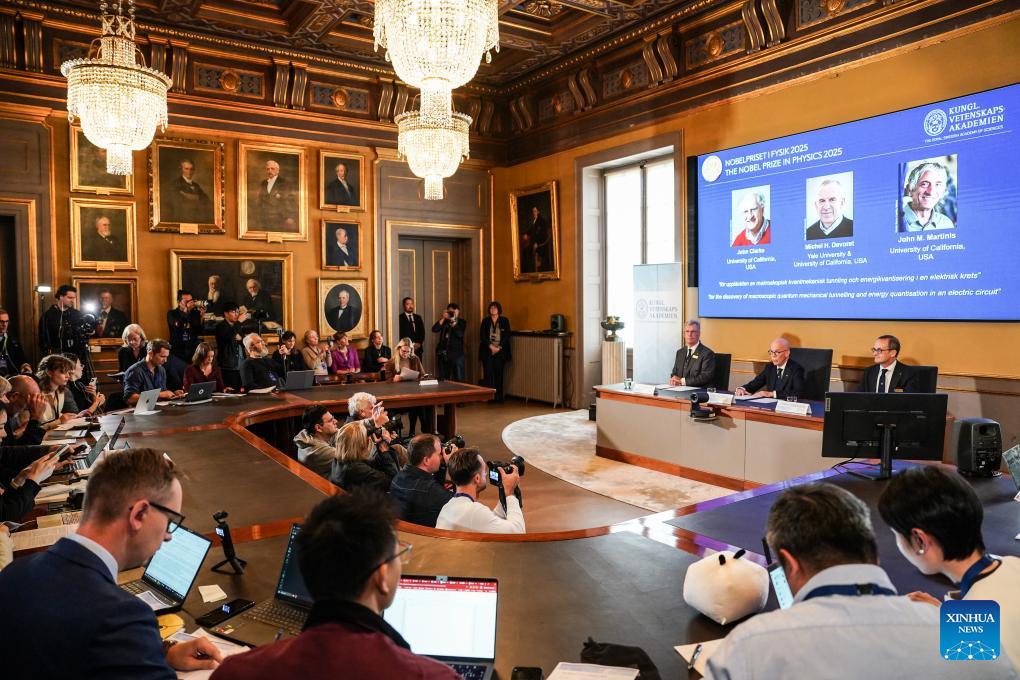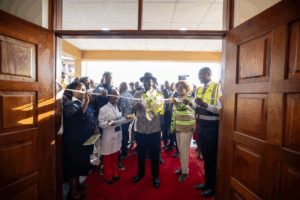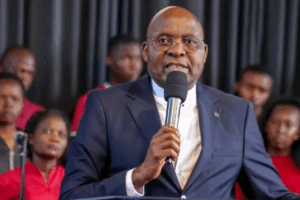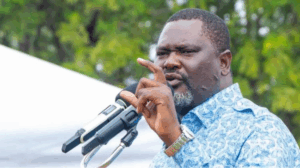Explainer: When quantum weirdness becomes visible — the science behind 2025 Nobel Prize in Physics
“When you bring it to the macro scale, that means you can handle it. And that is why you can create new structures, and you can investigate and study what is going on in that quantum world,” she said.

The 2025 Nobel Prize in Physics is announced in Stockholm, Sweden, Oct. 7, 2025. Three U.S.-based scientists, John Clarke, Michel H. Devoret and John M. Martinis, have been awarded the 2025 Nobel Prize in Physics for their discovery of macroscopic quantum mechanical tunnelling and energy quantisation in an electric circuit, the Royal Swedish Academy of Sciences announced on Tuesday.
STOCKHOLM, Oct. 7 (Xinhua) — The strange world of quantum physics, where particles can pass through walls and exist in two states at once, has now become visible on a human scale.
Three U.S.-based scientists, John Clarke, Michel H. Devoret and John M. Martinis, have been awarded the 2025 Nobel Prize in Physics for demonstrating that such quantum phenomena can occur in a simple electrical circuit big enough to see.
The Royal Swedish Academy of Sciences honored them “for the discovery of macroscopic quantum mechanical tunneling and energy quantization in an electric circuit.”
They will share the 11-million-Swedish-krona (1.17 million U.S. dollars) prize equally.
WHO ARE THEY AND WHAT THEY FOUND?
Quantum mechanics governs the microscopic world of atoms and electrons, where particles can “tunnel” through barriers and absorb energy in fixed packets called quanta.
At human scales, these effects seem to vanish: a ball made of astronomical numbers of molecules, for instance, will never pass through a wall.
In the 1980s, at the University of California, Berkeley, Clarke, Devoret and Martinis set out to test whether quantum laws could still apply to a device large enough to see.
They built a Josephson junction — a circuit where two superconductors are separated by an ultrathin insulator. In ordinary metals, electrons jostle with the material and one another, but in a superconductor cooled near absolute zero, they form Cooper pairs that move together without resistance, sharing a single quantum wavefunction.
The team prepared the circuit in a zero-voltage state that, under classical physics, should have remained trapped. Yet it occasionally “escaped,” not through heat, but through quantum tunneling across an energy barrier. This provided direct evidence of quantum behavior on a macroscopic scale.
When the scientists exposed the circuit to microwave radiation, they observed sharp resonance peaks at specific frequencies. Each peak corresponded to the energy gap between two quantized states, showing that the circuit’s energy could take only discrete values. In short, a device made of billions of electrons was behaving as a single quantum system.
WHY THE DISCOVERIES MATTER
Before their experiments, quantum tunneling and energy quantization had been observed mostly in atoms and subatomic particles.
Eva Olsson, a member of the Nobel Committee for Physics, described the discovery as opening “a door to another world.”
“When you bring it to the macro scale, that means you can handle it. And that is why you can create new structures, and you can investigate and study what is going on in that quantum world,” she said.
Olle Eriksson, chair of the committee, said it is wonderful to celebrate how century-old quantum mechanics continues to bring new surprises. “It is also enormously useful, as quantum mechanics is the foundation of all digital technology.”
FROM EXPERIMENT TO QUANTUM TECHNOLOGY
By the late 1990s, researchers built on the trio’s findings to create quantum bits, or qubits, that store information in two quantized energy levels, the same principle Clarke, Devoret and Martinis had demonstrated.
Martinis later applied these methods to develop early superconducting quantum processors, where qubits can oscillate between “0” and “1” in delicate quantum superpositions.
The transistor in computer microchips is one example of how quantum mechanics already underlies everyday technology, the Nobel committee noted.
This year’s Nobel Prize, it said, lays the groundwork for the next generation of quantum technologies, including quantum cryptography, quantum computers, and quantum sensors.








